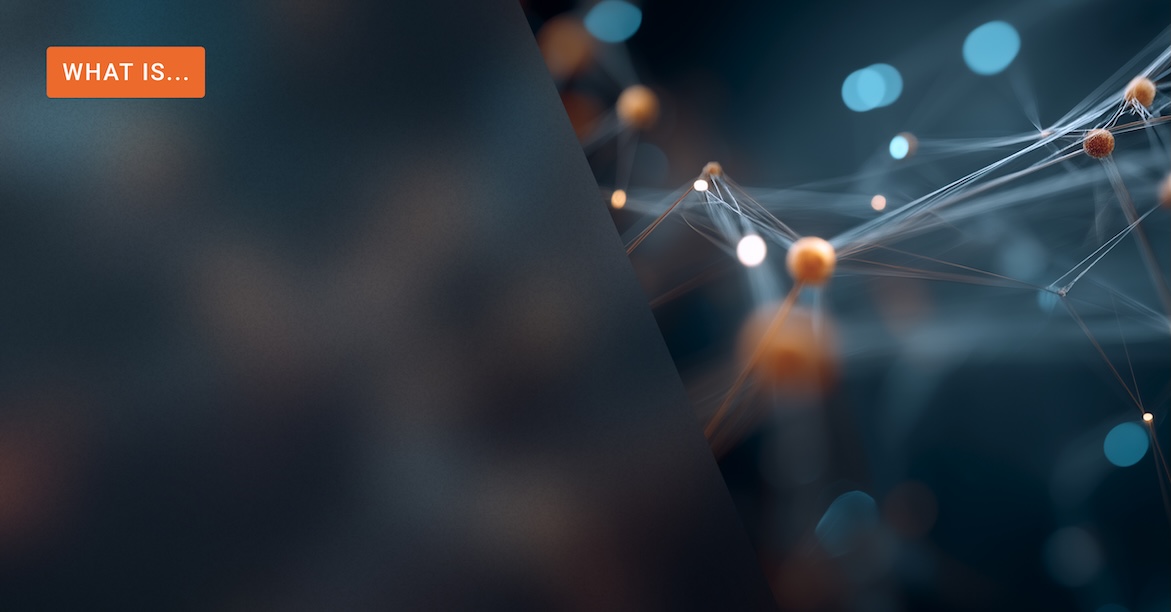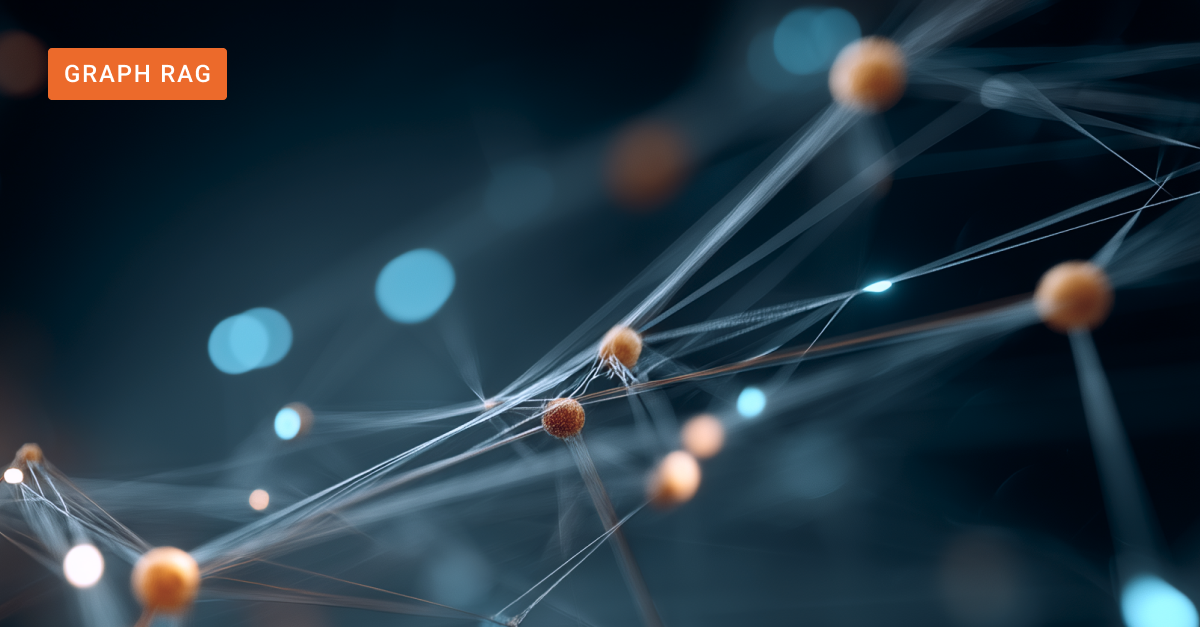Across sectors, organizations are pouring vast financial and operational resources into integrating AI into their business architecture. Despite that, recent headlines have made one thing abundantly clear: the vast majority of generative AI initiatives are failing to deliver reliable results let alone ROI.
Why? While it’s impossible to pin all their failings down to a single weakness, there are recurring themes. One of them is poor accuracy, which translates to a lack of trust. Far too often, enterprise AI platforms produce inconsistent, inaccurate, or "hallucinated" answers that lack real business context.
The underlying problem is well understood: Most enterprise AI platforms use large language models to respond to user queries. In the case of platforms based on retrieval augmented generation (RAG), these queries are augmented with internal data sourced using semantic search. Each of these technologies – LLMs and semantic search – are inherently probabilistic. Consequently, any outputs they produce are, too.
In high-stakes use cases, this “non-determinism” can create significant risk, holding back the use of enterprise AI in production-scale deployments. The solution, therefore, lies in countering technology’s probabilistic bias with a structured, deterministic element, such as an enterprise knowledge graph.
This guide explains what a knowledge graph is, why it is a non-negotiable component for enterprise AI in mission-critical applications, and how you can harness this technology to drive real business value.
What Is a Knowledge Graph? (With Examples)
An enterprise knowledge graph is a knowledge base that uses a graph-structured data model to represent and integrate information that is relevant to the organization. It represents data as a network of entities (like people, products, or concepts) and the relationships between them.
For businesses, a knowledge graph's main purpose is to provide a single, structured source of truth that connects siloed data. This interconnected data model enables smarter AI, provides context for RAG and delivers more accurate, deterministic answers for enterprise search and analytics.
Put simply, it's a model of your business that explicitly maps real-world entities – things – and the relationships between them.
- Entities (or nodes) are the "things," such as a person, a product, a company, or a concept.
- Relationships (or edges) are the "connections" that describe how these entities relate, such as "works for," "purchased," "is a variant of," or "submitted."
- Taxonomies and Ontologies: A taxonomy organizes your concepts (e.g., "Product" > "Software" > "CRM"), while an ontology defines the rules and relationships (e.g., "A 'Customer' can 'Purchase' a 'Product'").
- Graph Database: This is the storage technology specifically designed to store and query these complex, interconnected relationships at high speed.
Example: In a traditional database, you might have separate tables for "Customers," "Products," and "Support Tickets." Finding the connection between them requires complex queries.
A knowledge graph provides a more intuitive way to model this ecosystem. A node for "Customer A" is connected via a "purchased" edge to "Safe Plus Plan" and via a "submitted" edge to "Ticket #12345."

The result is a rich, interconnected, and machine-readable web of information that mirrors your actual business, allowing you to ask complex questions like, "Which customers who bought 'Safe Plus' in the last quarter also submitted a support ticket?"
Why Knowledge Graphs Are Critical for Enterprise AI
The core challenge of modern AI is its "non-deterministic" nature. Knowledge graphs directly tackle this problem by providing the factual, deterministic foundation that probabilistic models and semantic search approaches used for information retrieval lack, providing a strategic advantage across three key pillars: accuracy, context, and automation.
Deterministic, Reliable Answers
Particularly in regulated industries like finance or healthcare, AI outputs need to be dependable. Ambiguity can be a liability. A knowledge graph provides a deterministic, fact-based source of truth, guiding the information retrieval algorithm to the most relevant information, and delivering verifiable, relevant facts to the LLM, ensuring outputs are consistent, reliable, and trustworthy.
Disambiguation and Context
When you search for your CEO in your organization’s vast corpus of content, you might get dozens of documents where the name appears. Contrast that with a knowledge graph, which returns the entity – the person, his role at a specific company, and the projects he's connected to, feeding the LLM with context, not just keywords.
Powering Complex Workflows
A knowledge graph can store more than just data – it can map business processes. The graph can define the steps for a complex compliance check, a customer onboarding journey, or an internal approval workflow. An AI can then use this "map" to reason, orchestrate, and automate multi-step tasks, moving well beyond simple question-and-answering.
Key Enterprise Knowledge Graph Use Cases
When implemented correctly, an ai knowledge graph drives measurable roi by solving specific, high-stakes problems.
- Customer 360 and Support Automation: By connecting all customer touchpoints – products, tickets, contracts, and interactions – support agents get a complete picture. This powers automated ticket triage and reduces resolution times.
- Advanced Fraud Detection: In financial services, knowledge graphs excel at finding patterns invisible in siloed systems. They can instantly link seemingly unrelated entities, such as shared bank accounts, addresses, or phone numbers across multiple claims, to expose sophisticated fraud rings.
- Semantic Enterprise Search: This technology allows employees to find concepts and answers, not just a list of blue links. A query for "compliance policy for EU data" can provide a direct answer, the policy owner, and related procedures, all drawn from the graph.
- Risk and Compliance Monitoring: A knowledge graph can proactively monitor relationships between clients, internal employees, and third-party vendors to automatically flag potential conflicts of interest or compliance risks.
How RDF Powers Knowledge Graphs (A Brief Technical Deep Dive)
Behind every knowledge graph is a framework that makes all those connections machine-readable and interoperable. That framework is RDF, or the Resource Description Framework – the foundational data model for most ontologies and enterprise knowledge graphs as defined by the W3C consortium.
At its core, RDF expresses knowledge as simple triples: subject – predicate – object
Each triple represents one atomic fact, such as: Alice — knows — Bob
In a business context, a similar relationship could look like : Customer123 — purchased — Product456.
These triples can then be linked together to form a graph of relationships, where entities (subjects and objects) are connected through well-defined predicates (relationships). Over time, this network grows into a comprehensive model of your enterprise — one that machines can traverse and reason over.
RDF uses URIs (Uniform Resource Identifiers) instead of plain text labels, again forming a subject – predicate – object triple:
<http://example.org/Customer123> <http://example.org/purchased> <http://example.org/Product456>
This might look verbose, but it’s what gives RDF its power. Every concept is uniquely identified, ensuring that data from different systems can merge seamlessly without naming conflicts.
If you remember just one thing about RDF, remember this: RDF is a machine-readable grammar for knowledge graphs. It doesn’t just store data; it defines how data connects. By adopting RDF, organizations can unify data across departments, systems, and even external sources — all in a consistent, linkable way.
Best Practices for Enterprise Implementation
Building an enterprise knowledge graph is a strategic journey, not a one-time project.
- Start with Your Business Blueprint: The biggest mistake is jumping straight to technology. Invest time upfront in designing your taxonomy and ontology. Define your business concepts and relationships first.
- Automate Data Classification: Don't try to tag and connect all your data manually. Use modern ai-driven tools to automatically classify documents and extract entities and relationships, which radically accelerates time-to-value.
- Begin with a High-Impact Use Case: Don't try to "boil the ocean." Start with a single, well-defined business problem (like customer support automation or compliance) to prove the value and build momentum.
- Combine Graph and Vector Search for AI-Powered Value Creation: Use retrieval augmented generation with your graph (aka GraphRAG) to blend the deep, contextual reasoning of a knowledge graph with the powerful semantic search of vector databases to get deeper insights and more accurate answers from your enterprise AI.
Conclusion: Your Next Steps with Squirro
For enterprise leaders, the time to act is now. A knowledge graph is not an academic exercise – it is a fundamental architecture for building reliable, scalable, and trustworthy AI.
It transforms your disconnected data from a siloed liability into an interconnected, strategic asset. By providing a verifiable source of truth, you empower your generative AI, unlock deterministic insights, and build a lasting competitive advantage.
Build an AI Foundation You Can Trust
Ready to build a foundation for accurate, deterministic generative ai?
Download our free white paper, Closing the Gap in Generative AI Accuracy, to learn how to eliminate hallucinations, improve decision-making, and unlock the true ROI of your AI investments with an enterprise taxonomy, ontology, and knowledge graph.







